We visited Hierapolis as part of this guided day trip from Antalya that also included Pamukkale—a pairing that makes sense geographically and atmospherically. Both sites offer a portal into geological marvels and classical ruins. But Hierapolis, perched above the cotton-white travertines, held its own distinct spell. Wide, golden fields. Crumbling colonnades. Shadowy amphitheaters. Snake coils carved in stone. Paragliders drifting slowly overhead.
A city of sacred breath
Founded in the 2nd century BCE by the Attalid kings of Pergamon, Hierapolis was always a city of contradiction—part spa town, part necropolis. A place of both healing and death. It grew rich from its hot springs, which still bubble through the earth, and gained spiritual power through the Plutonium, a cave that ancient priests believed to be an entrance to the underworld.
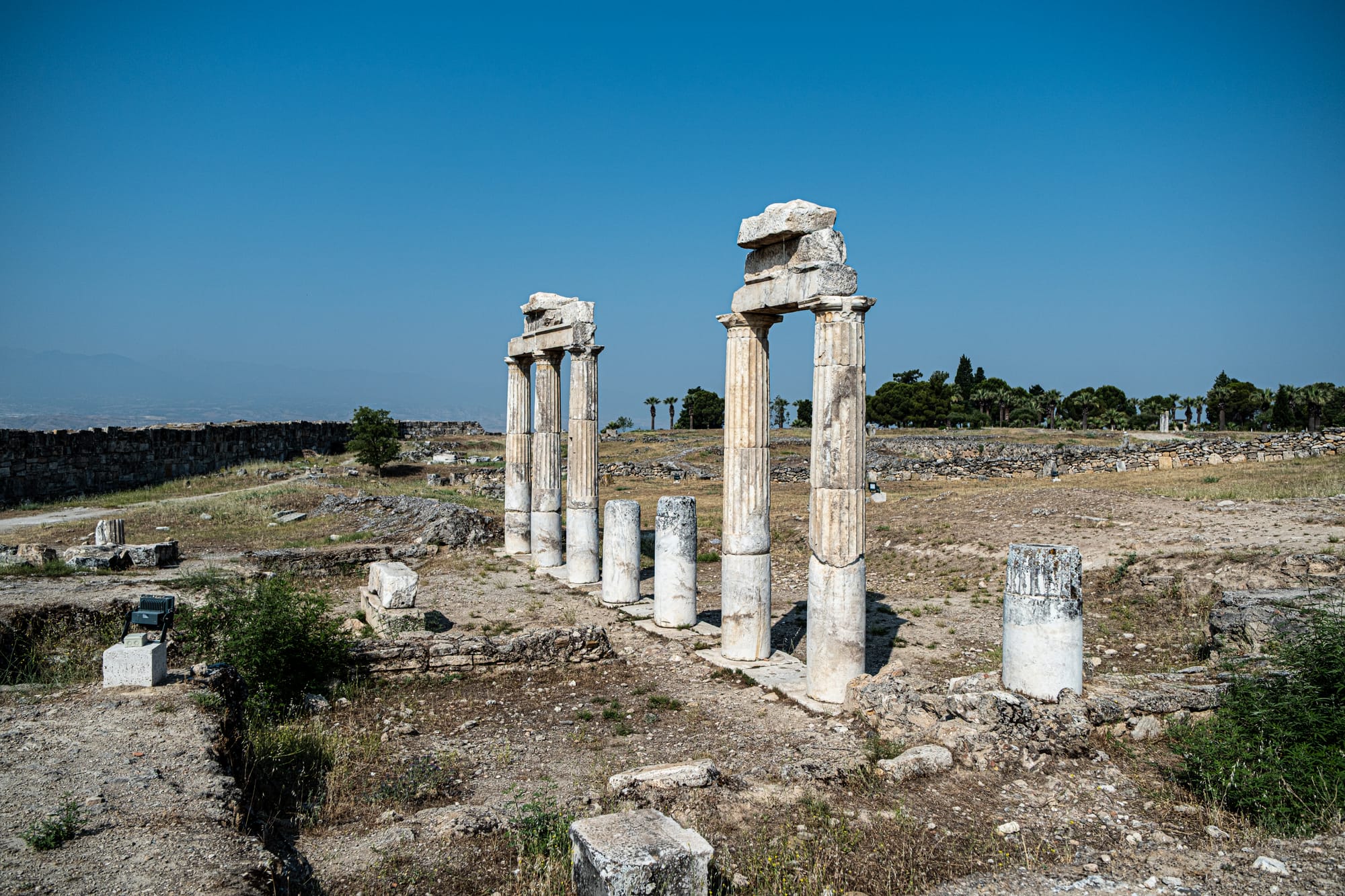
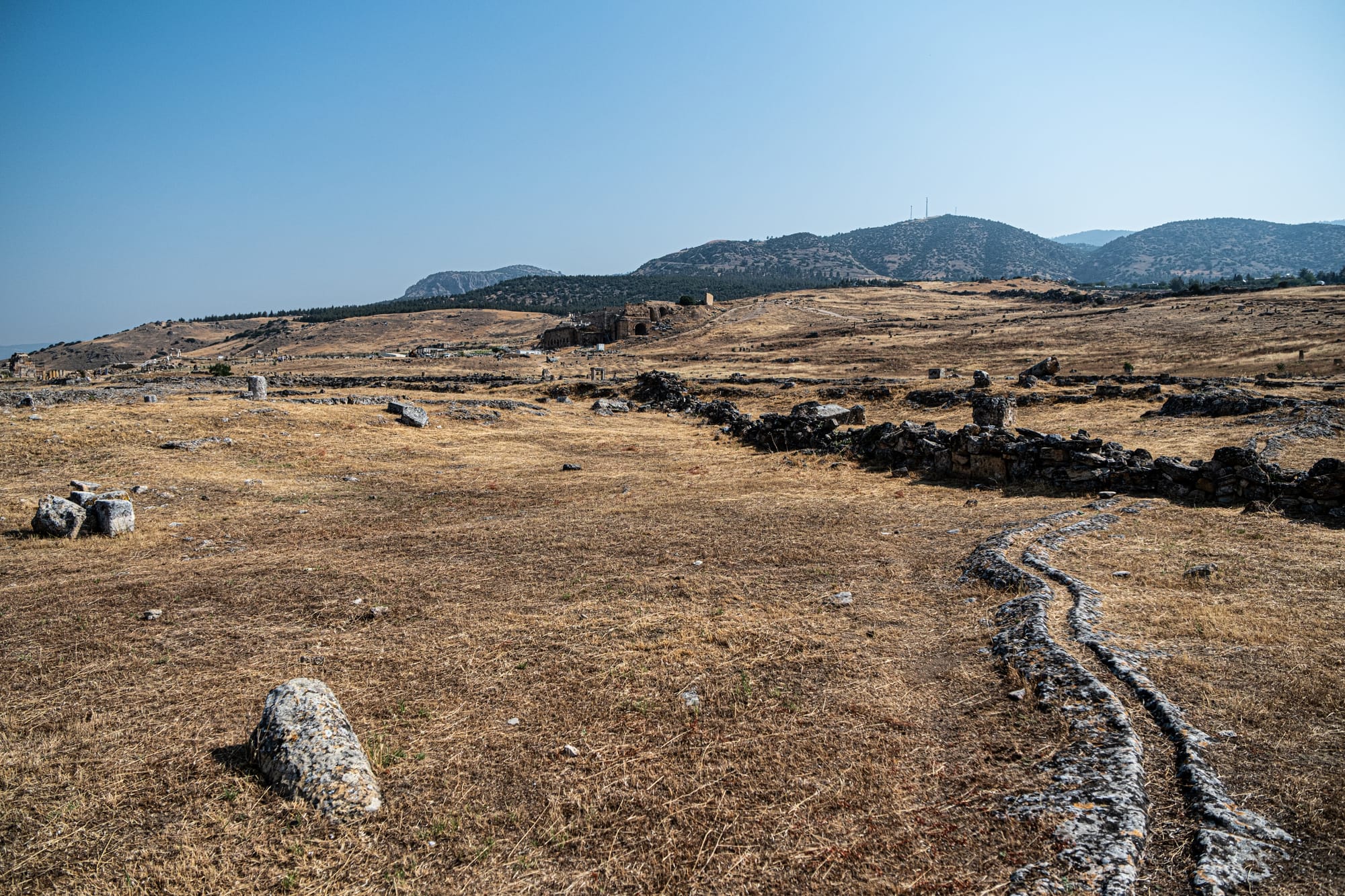
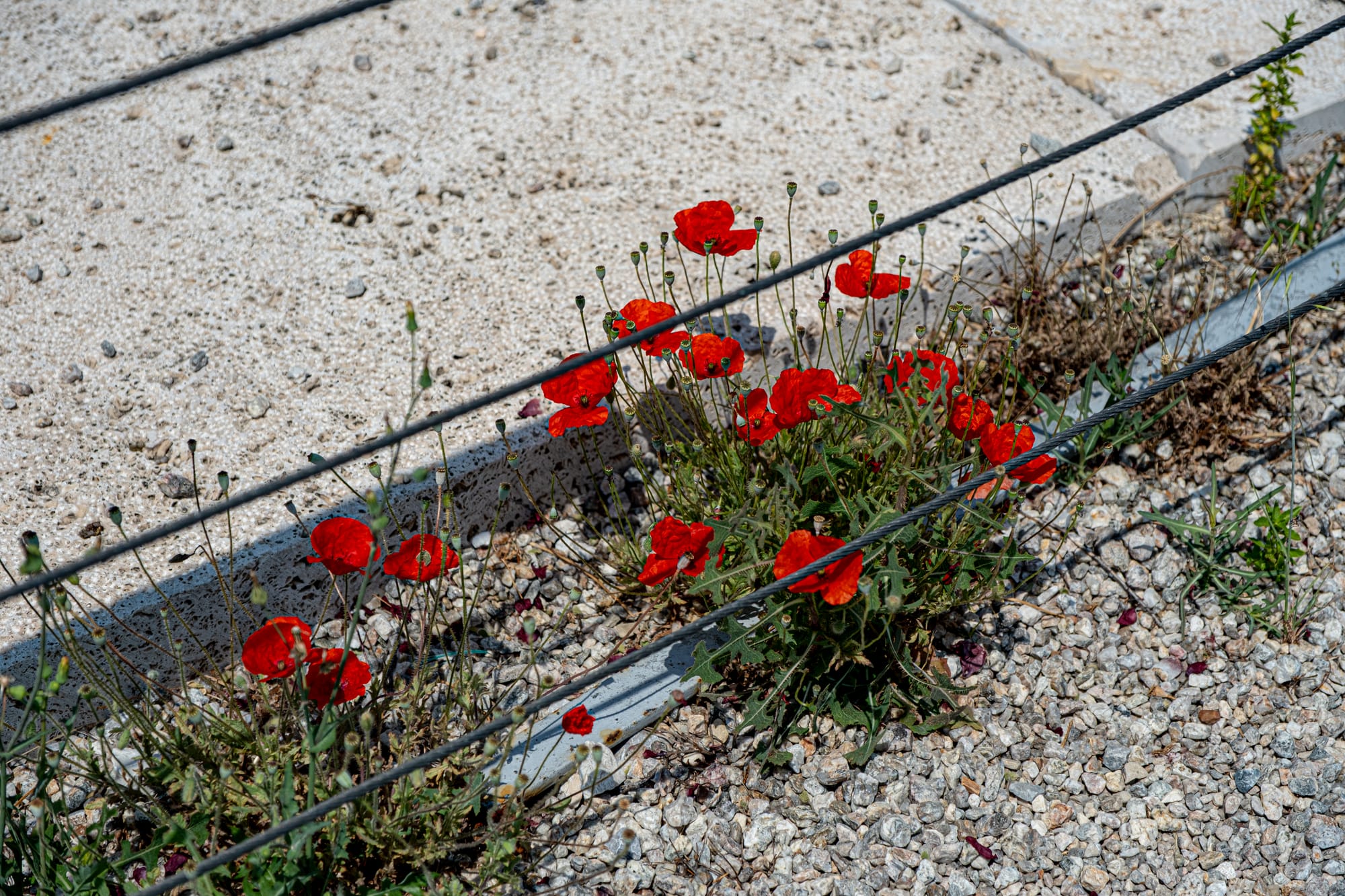
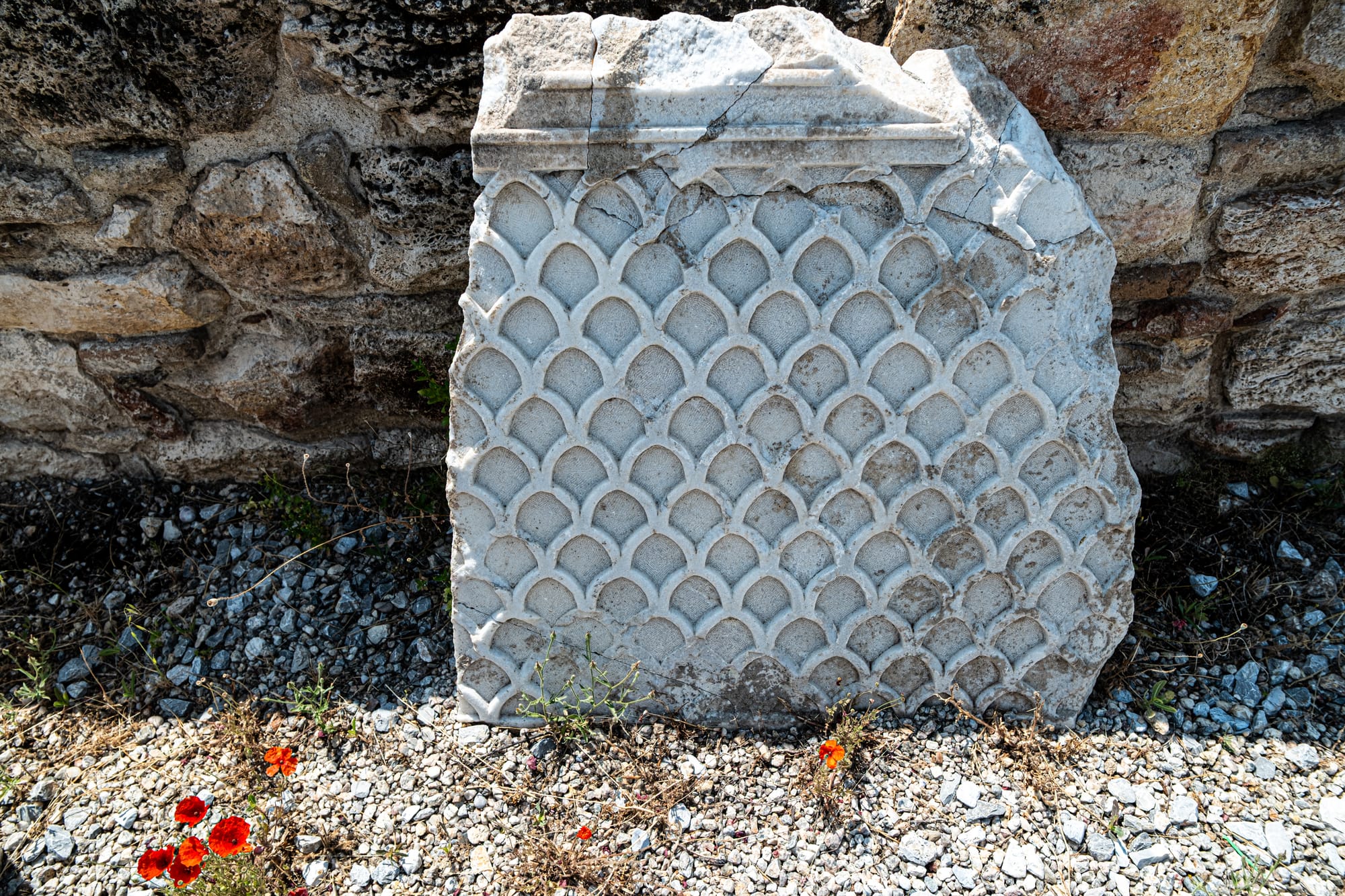
Wandering through Hierapolis reveals weatherworn columns, blooming wild poppies, and winding stone paths
The Romans later expanded the city, building grand theaters, temples, and bathhouses. An earthquake in 60 CE devastated the city—but Hierapolis was rebuilt, again and again. Today, what’s left are the stones: long roads, fractured altars, theatrical façades, and the dry echo of wind.
The amphitheater
The theater at Hierapolis is the most visually intact structure, and it rises unexpectedly from the hills. Built into the slope, it would’ve once seated more than 12,000 spectators for performances and imperial ceremonies. From the top rows, the views reach beyond the stage into the hazy sweep of the Menderes Valley.
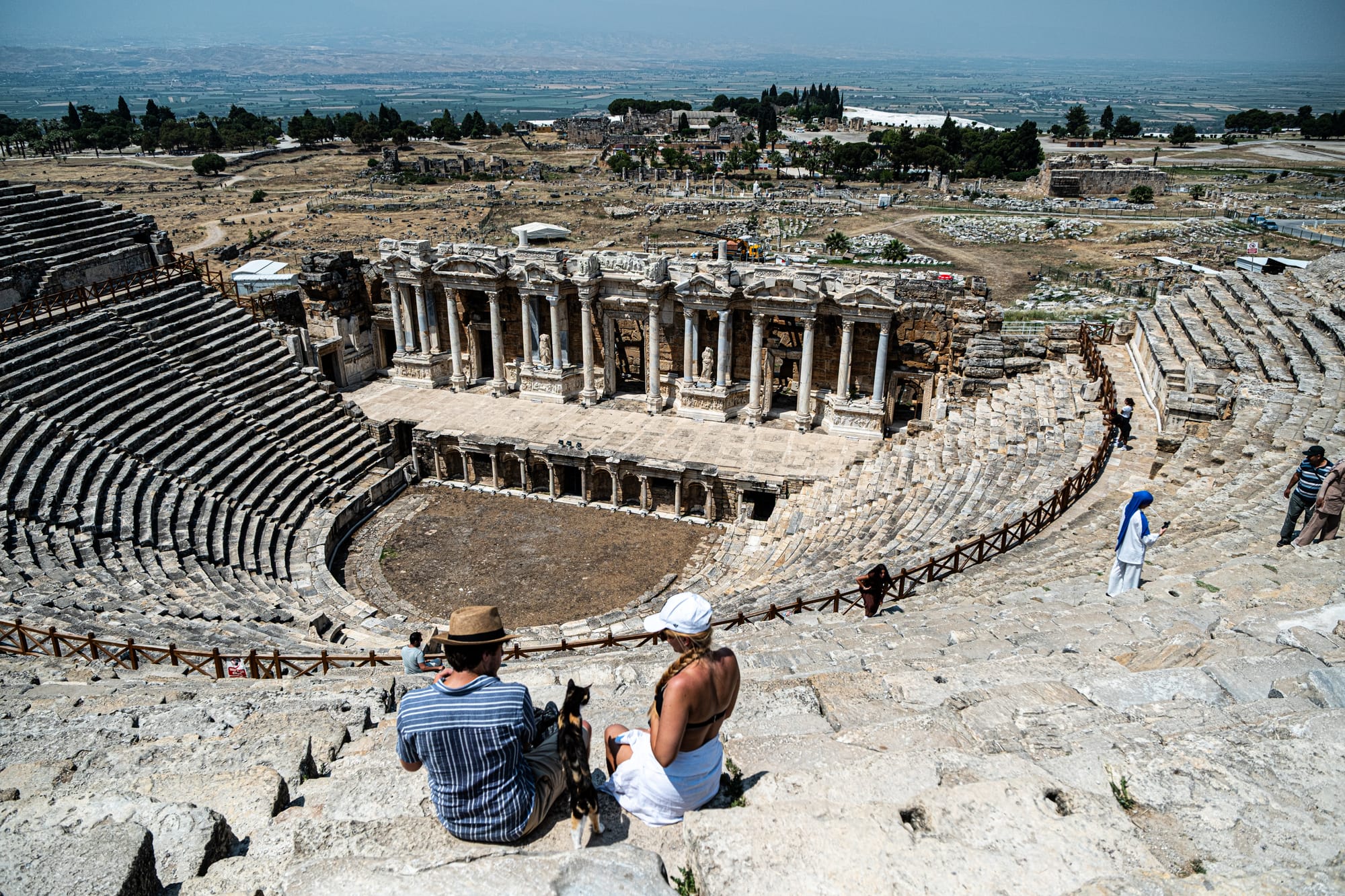
The stage itself still shows bas-reliefs: mythological scenes, winged figures, and vegetal patterns. It’s one of the best-preserved examples of Roman imperial theatre architecture in Anatolia, and it feels massive, mythic, and oddly silent.
The museum
Housed inside a former Roman bath, the small museum on site is dense with expression. You’ll find intricately carved sarcophagi featuring scenes of battles, banquets, and abductions.
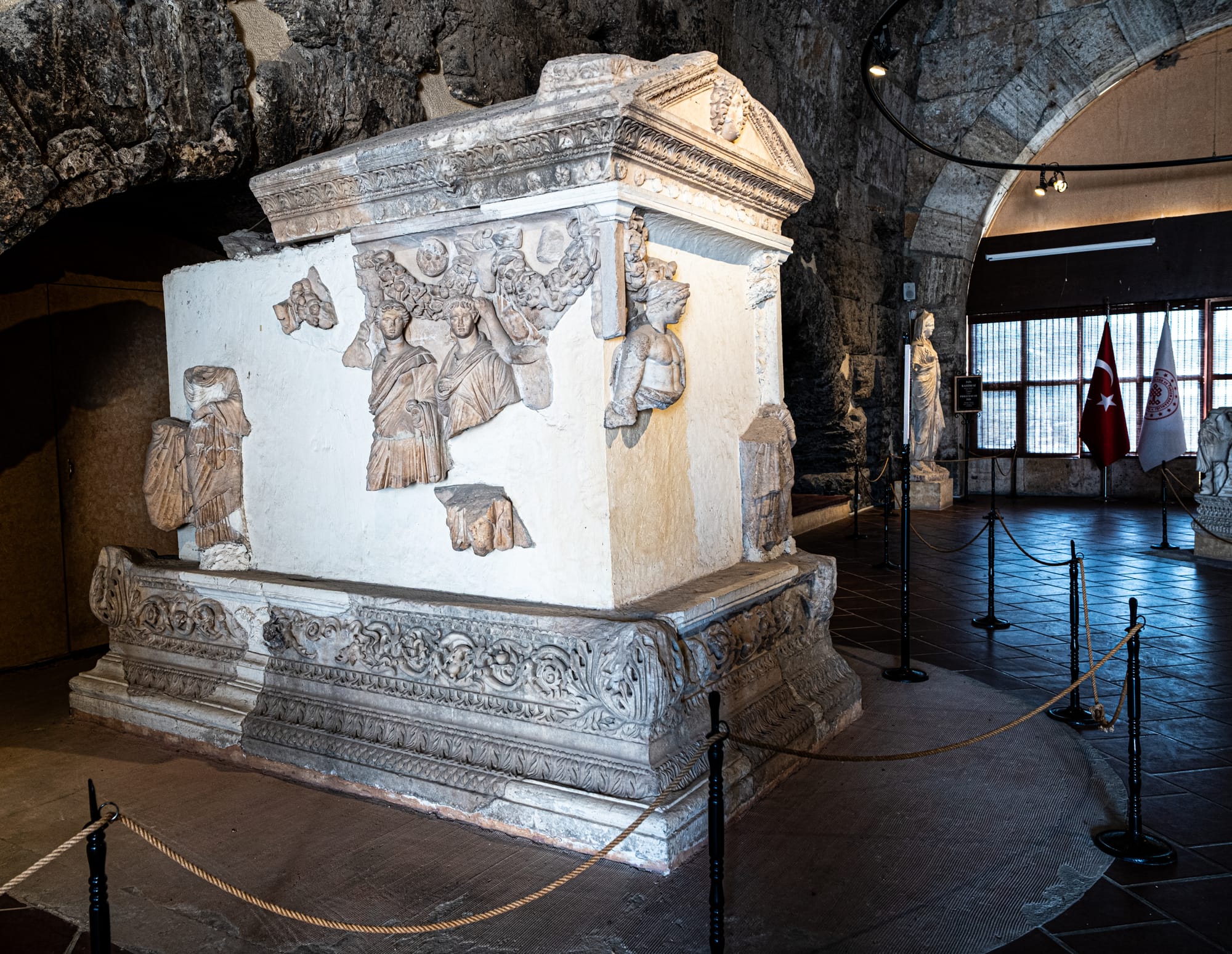
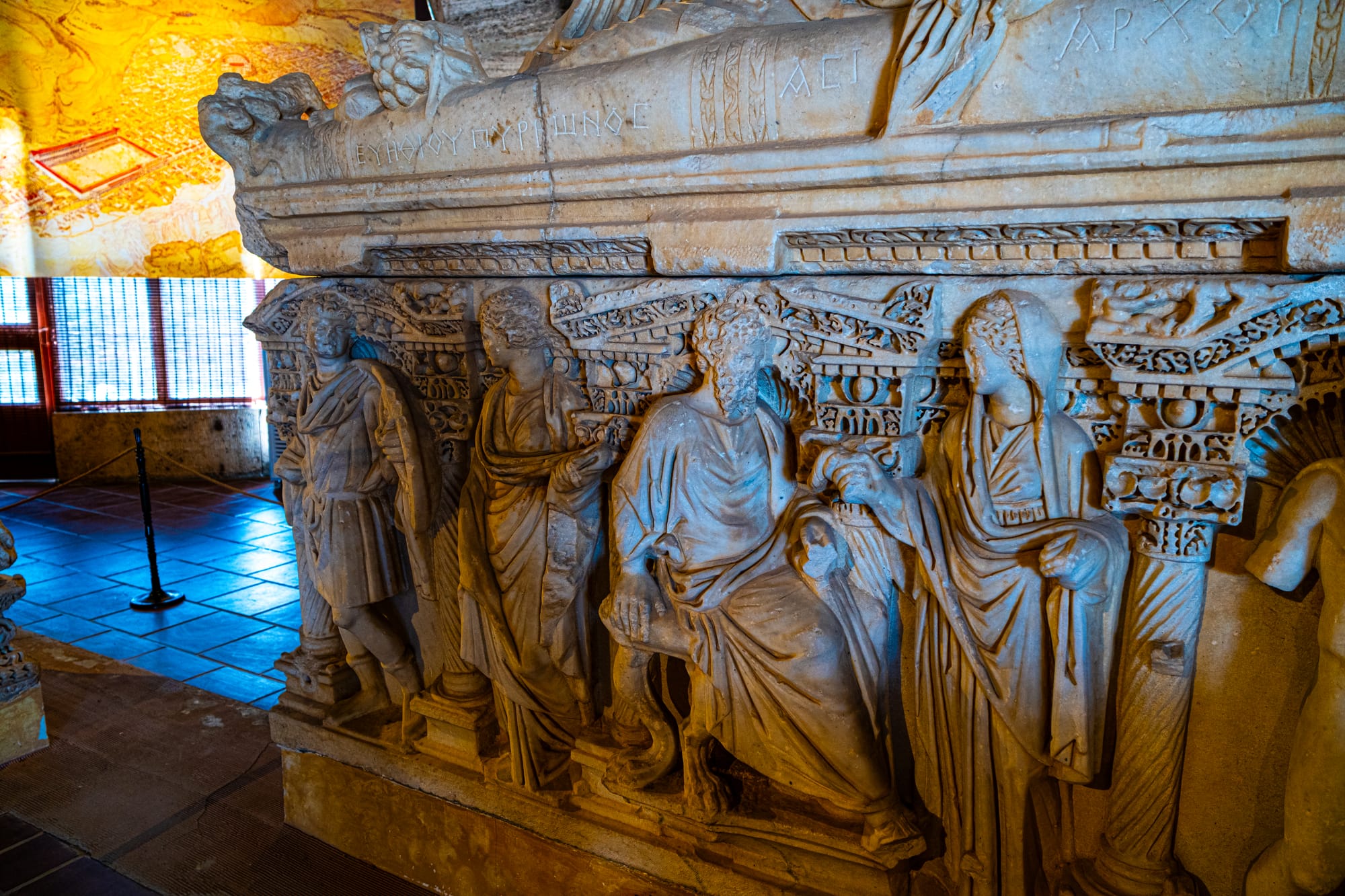
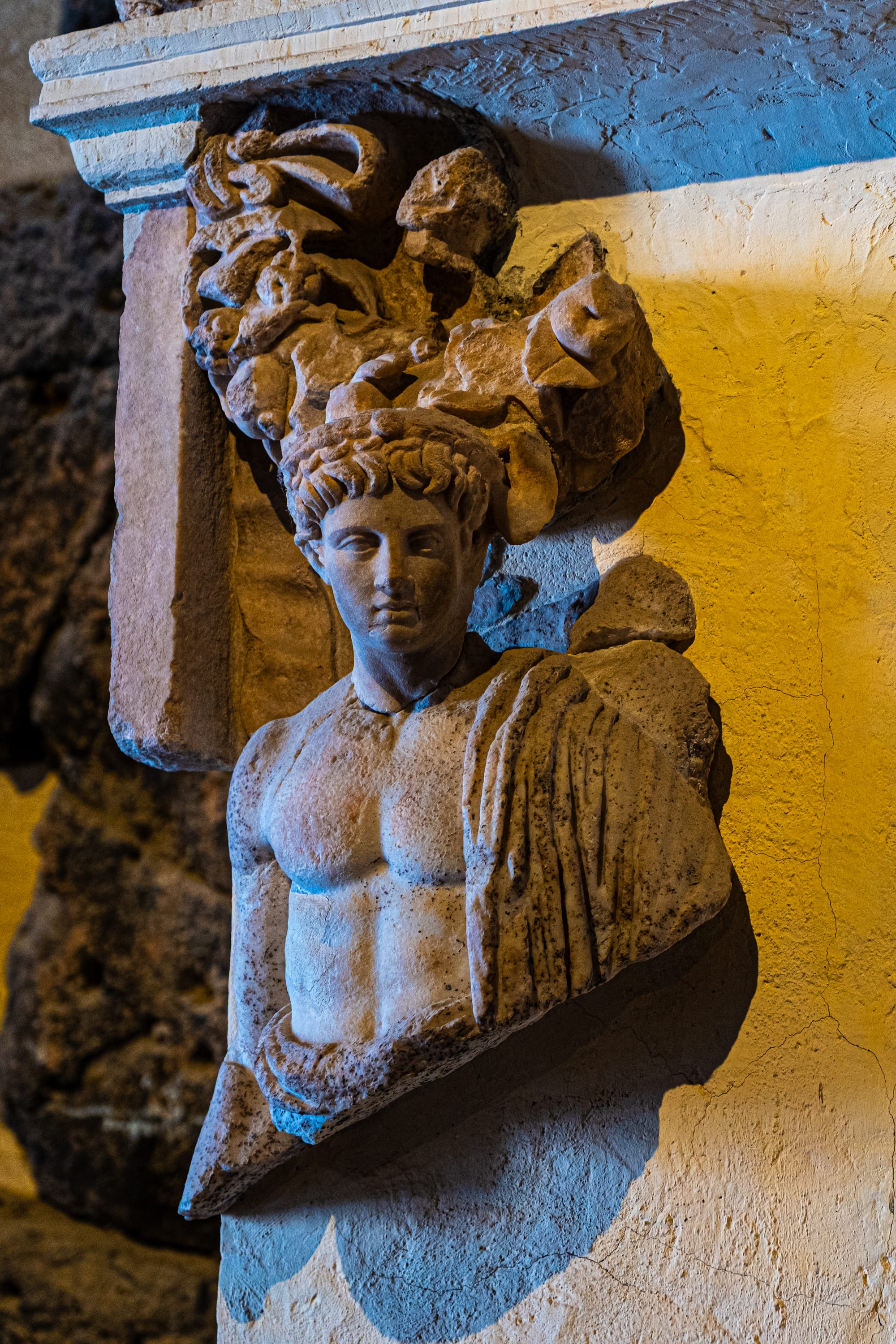
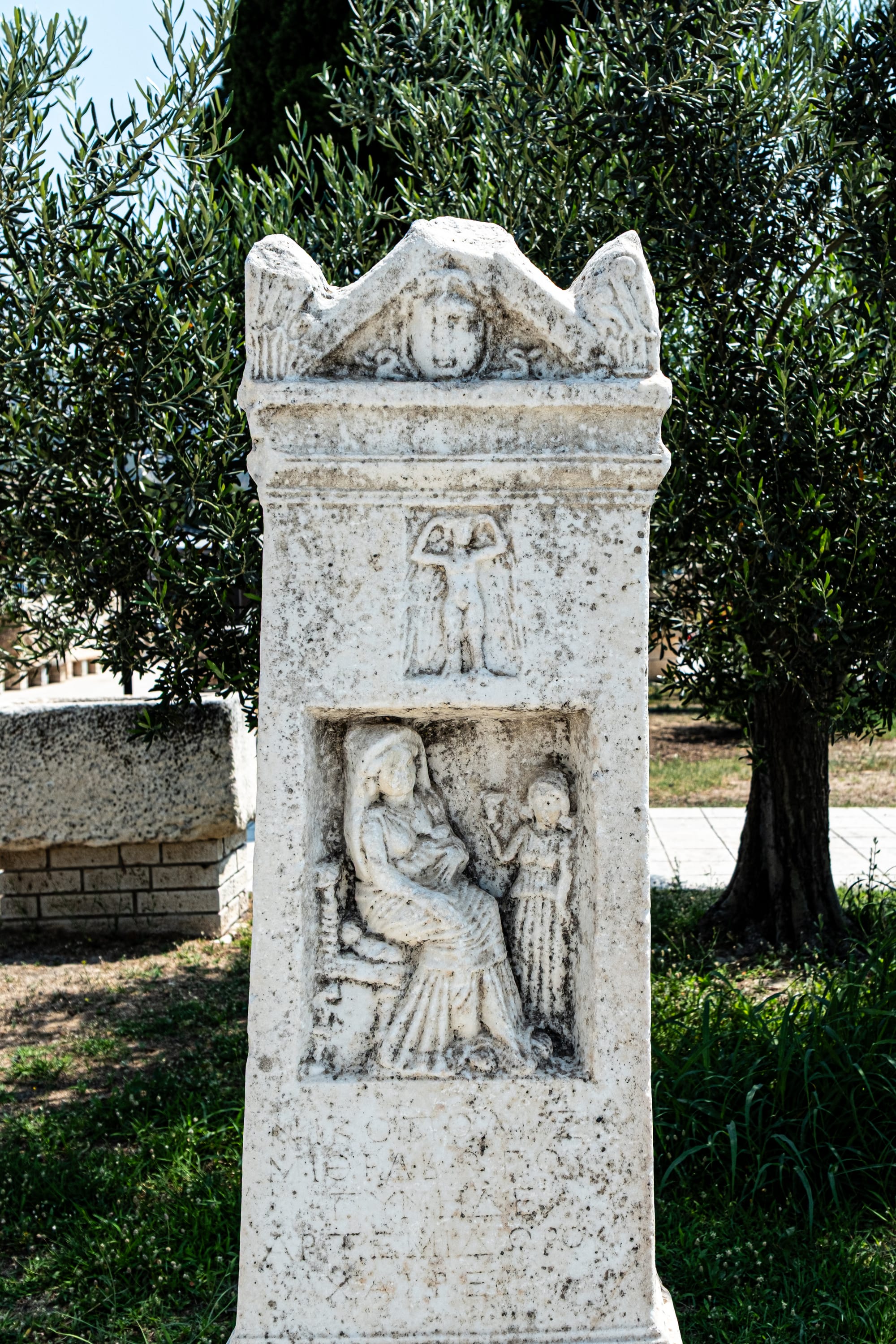
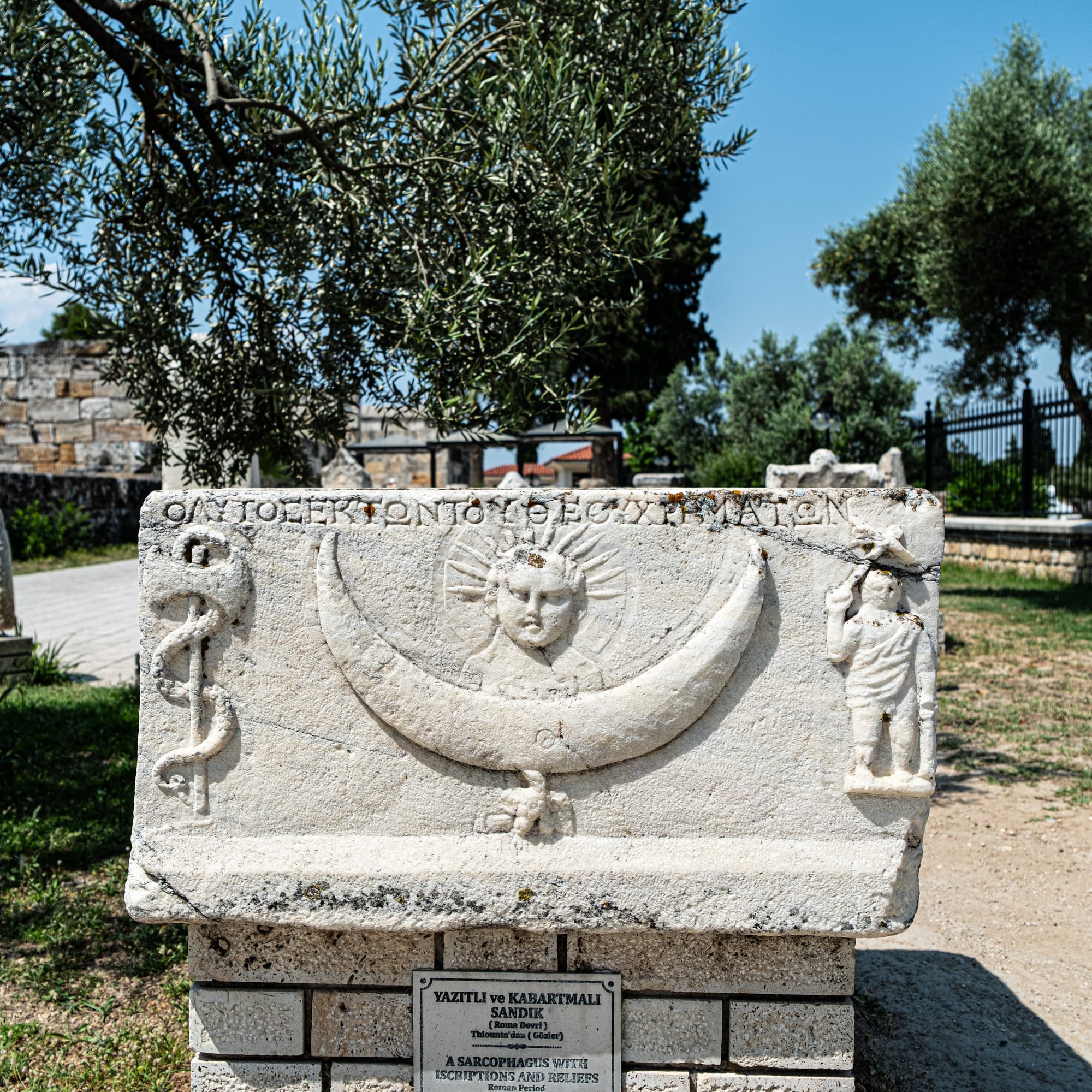
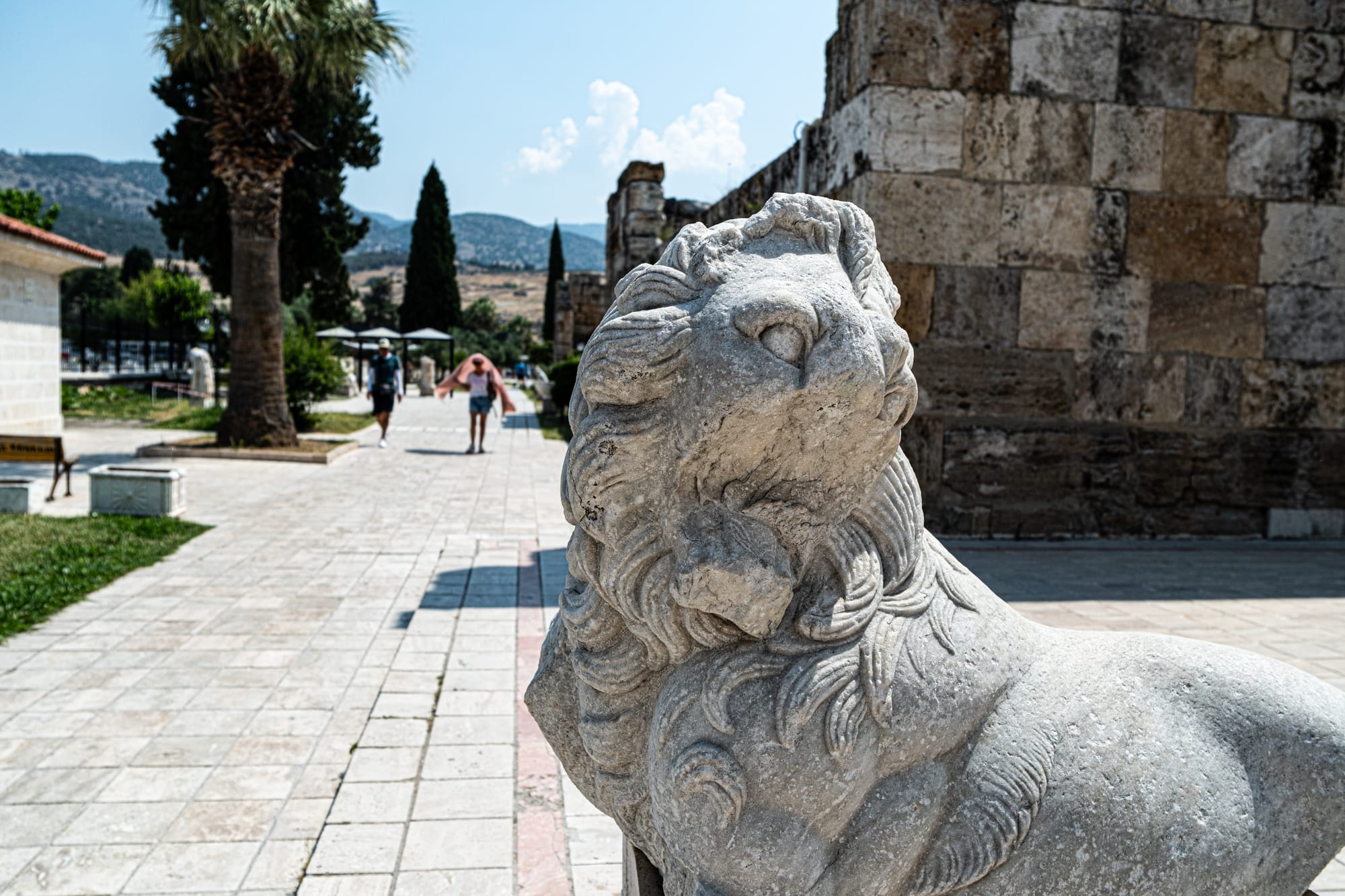
Intricately carved sarcophagi, statues, and relics inside the Hierapolis Archaeological Museum and surrounding grounds
There are fragments of statues—torsos, lions, laurel wreaths.
The spiral serpent of healing
One of the most captivating details in Hierapolis is a carved stone relief of a spiral-shaped snake—often missed by visitors, but deeply symbolic. This coiling serpent is thought to represent Asklepios, the god of healing, and was likely tied to the city’s reputation as a sanctuary of wellness.
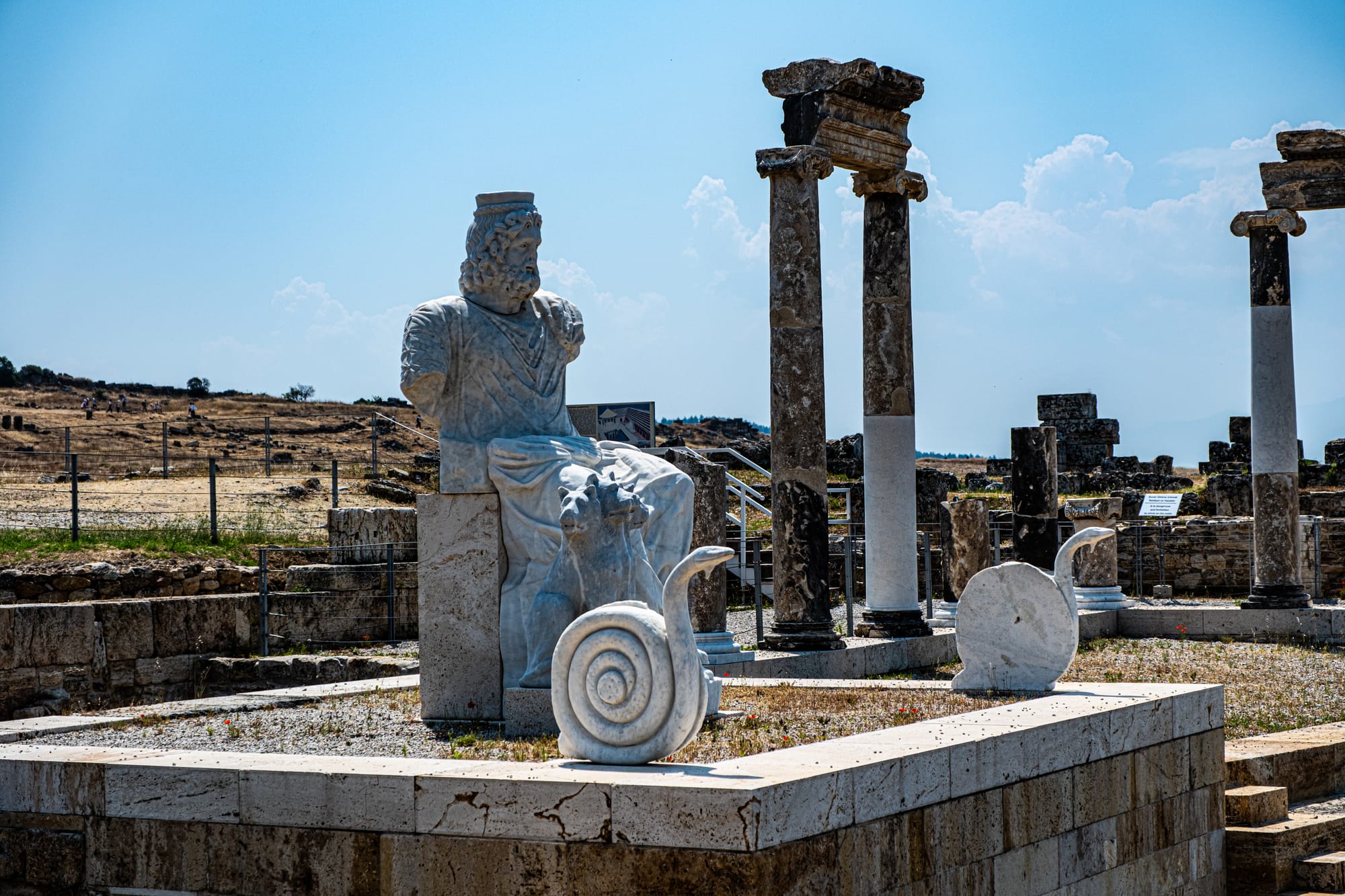
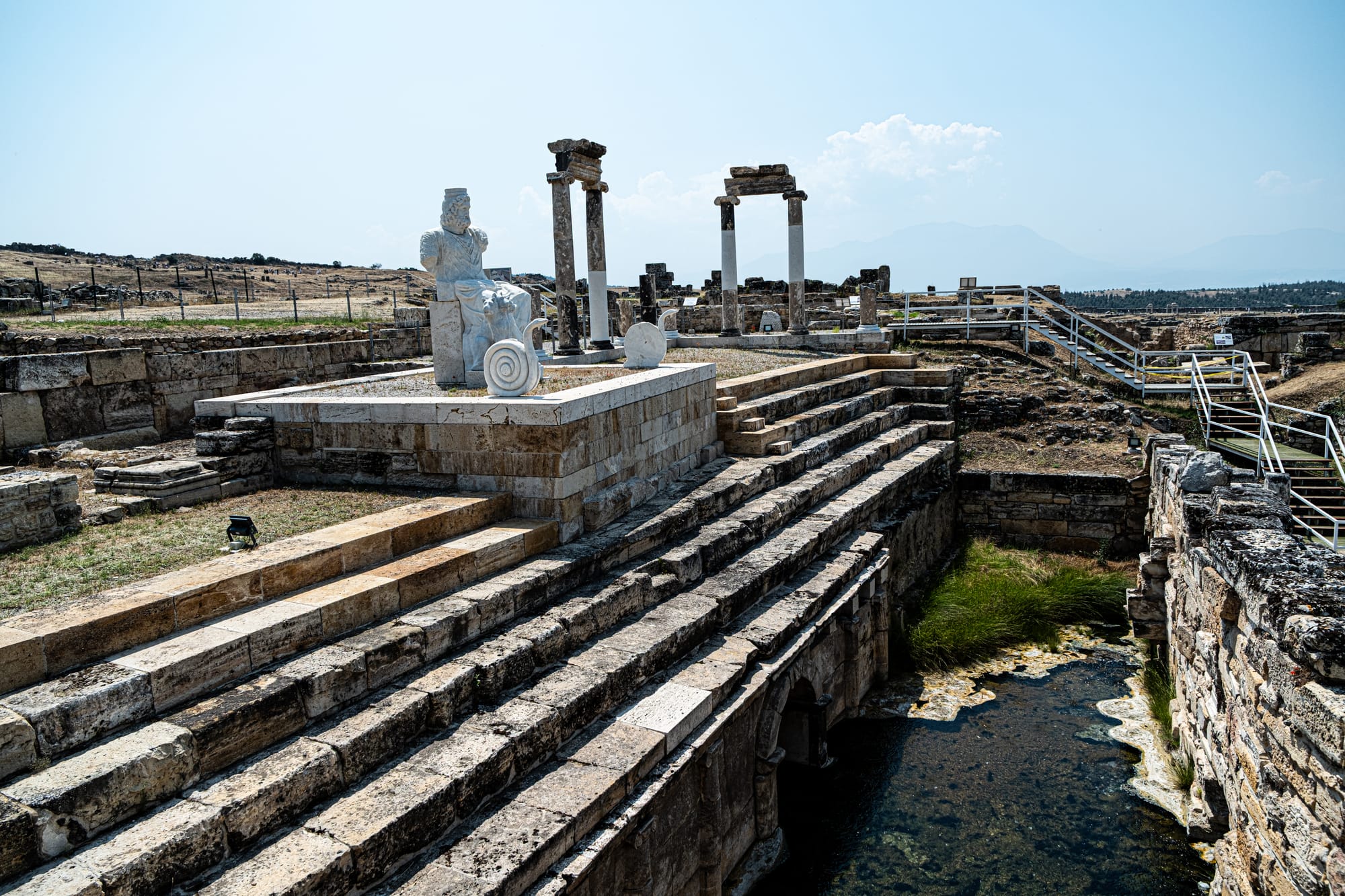
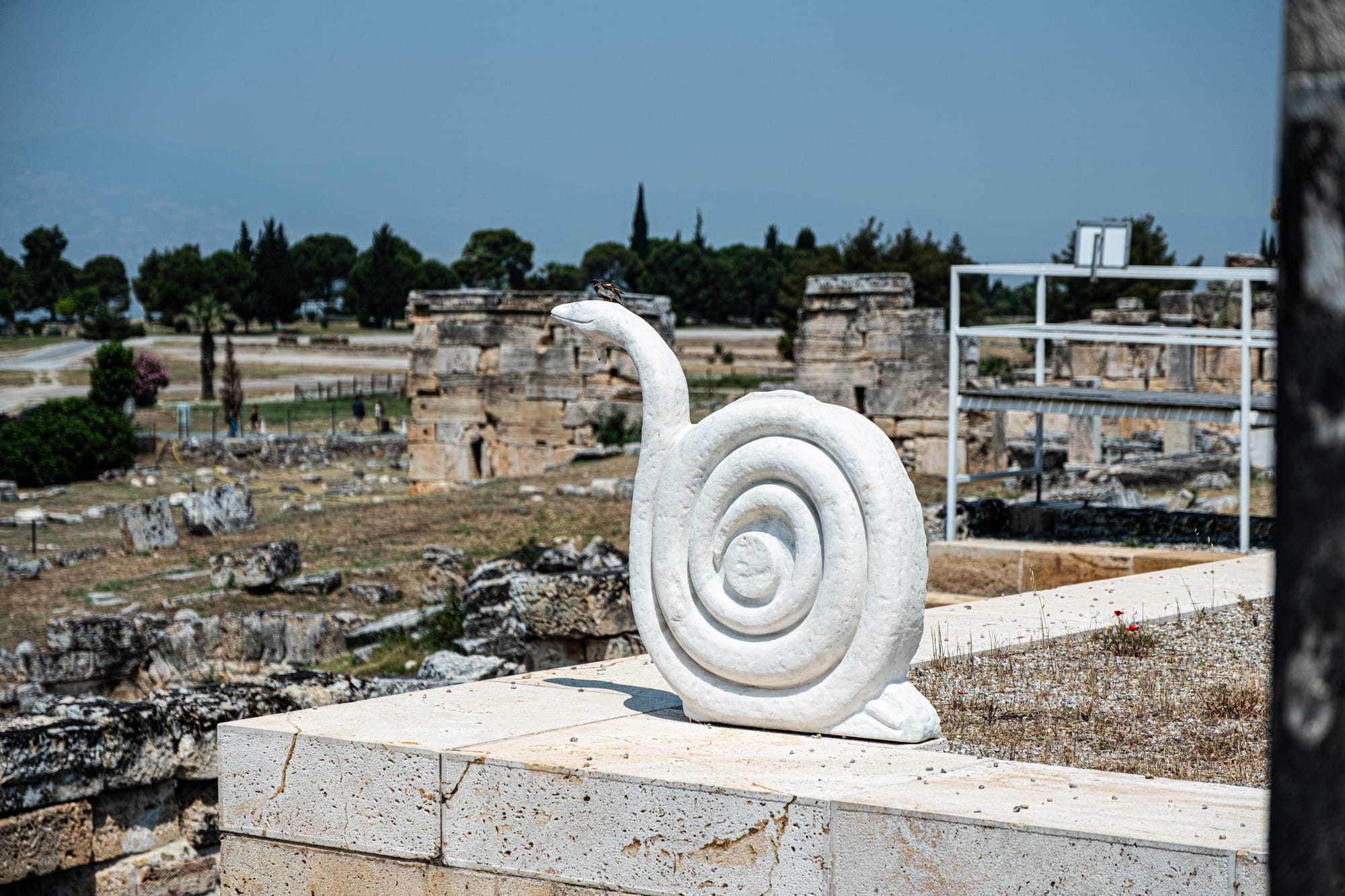
This serpent-shaped sculpture represents Asklepios—an ancient Greek symbol of healing and medicine
The motif is echoed in the modern symbol of medicine, and its presence here speaks to the site’s long history as a place of therapeutic springs and sacred rituals. Smooth and precise, the spiral grooves feel timeless—like a memory curled in stone.
The Cleopatra Pools
Although we didn’t get to experience the Cleopatra Pools ourselves—unfortunately they were closed during our visit—they’re typically a highlight for many visitors to Hierapolis. Also known as the Antique Pool, this thermal spring is said to have been a favorite of Cleopatra herself.
Today, the pool is filled with warm, mineral-rich water and scattered with submerged Roman columns, believed to have collapsed during an ancient earthquake.
Visitors can usually swim among the ruins for an additional fee. Even if you’re just passing by, the setting is surreal—sunlight glinting off broken marble beneath the water, framed by travertines and pine trees. If open, it’s worth at least stopping for a look—or a dip.
The agora and colonnaded streets
Several paths radiate outward from the heart of the city. One leads toward what’s believed to be the agora, or ancient marketplace. This area is more ruin than reconstruction, but with imagination, you begin to see the skeletal outline of stalls, meeting points, shaded arcades.
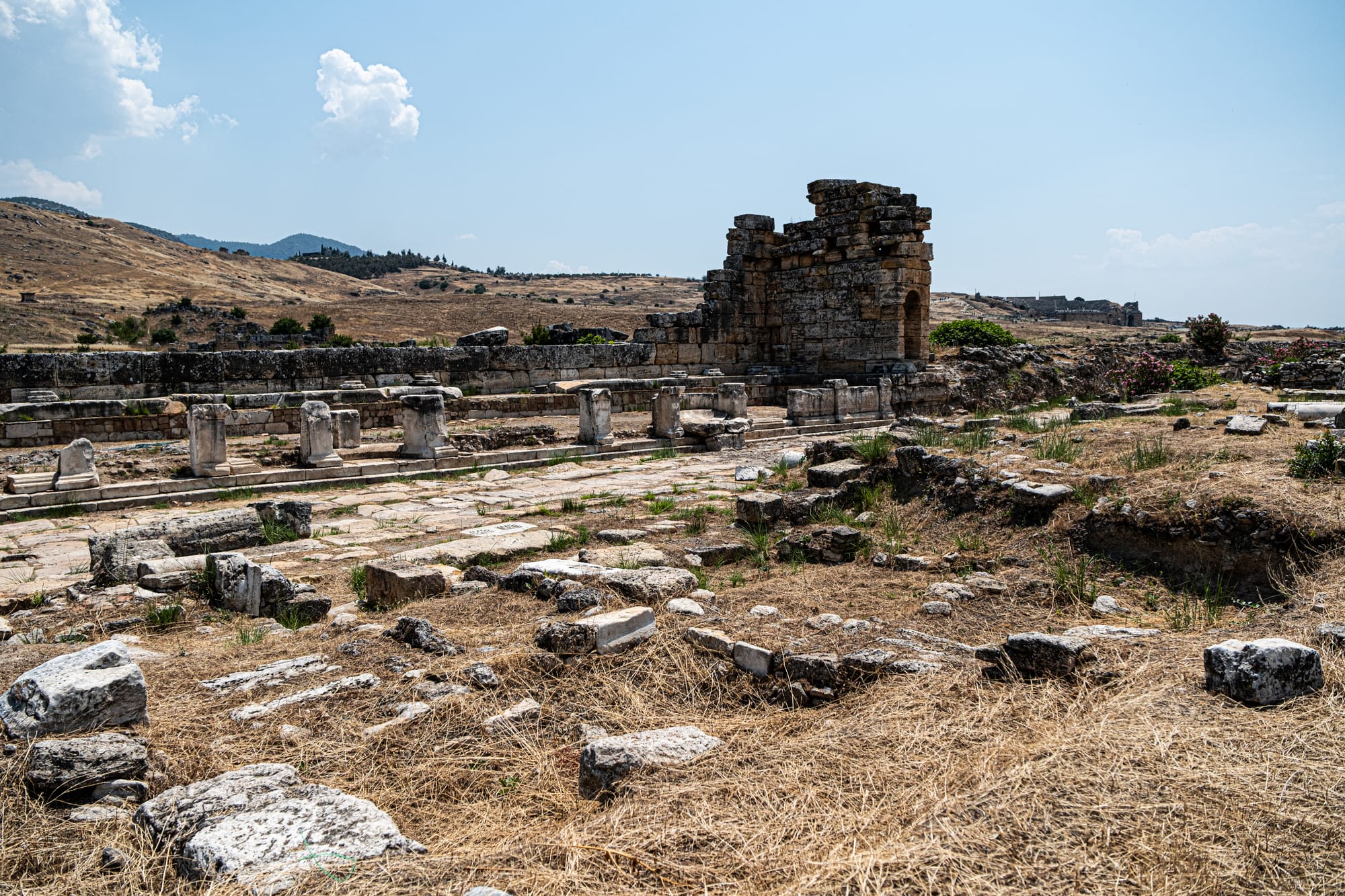
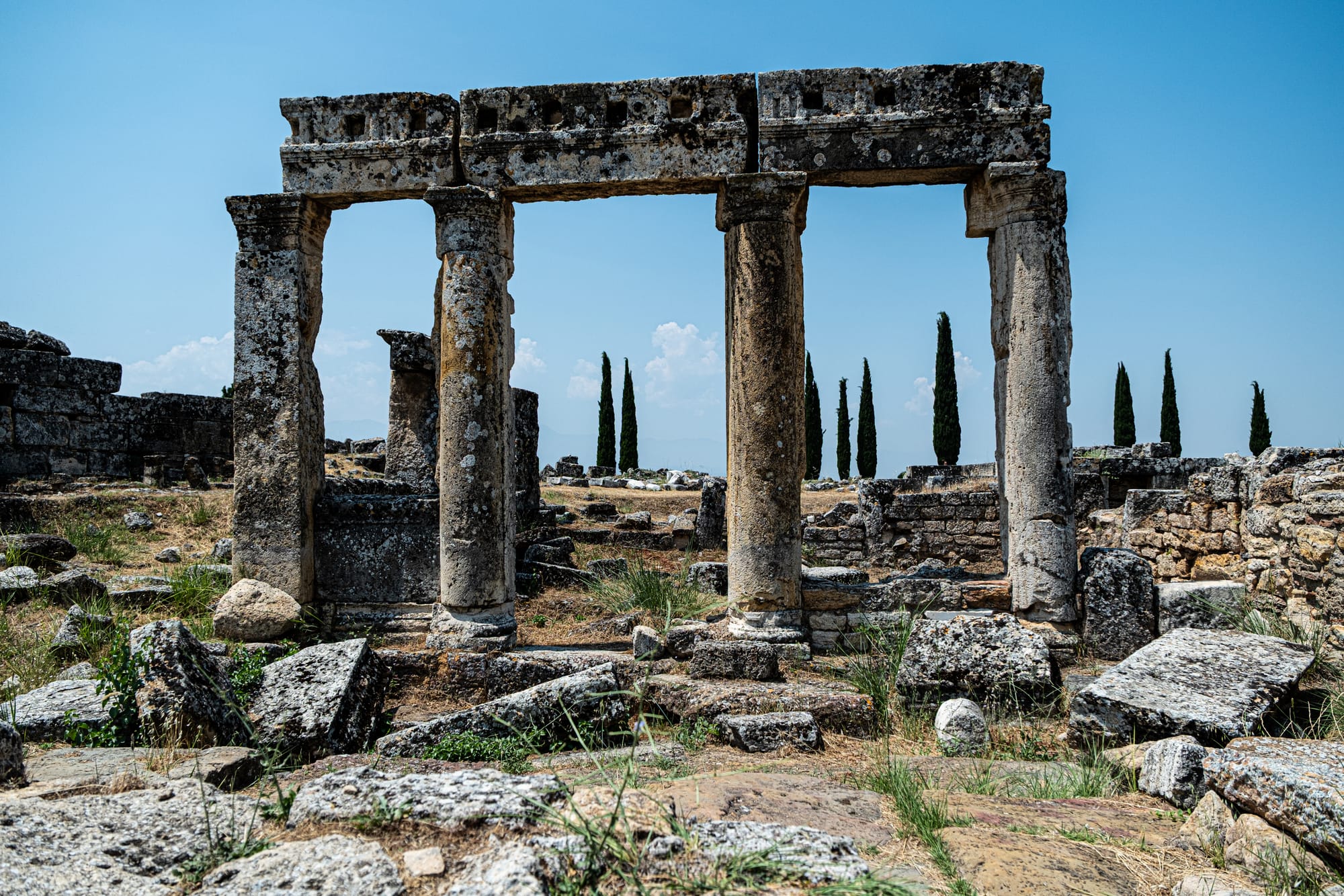
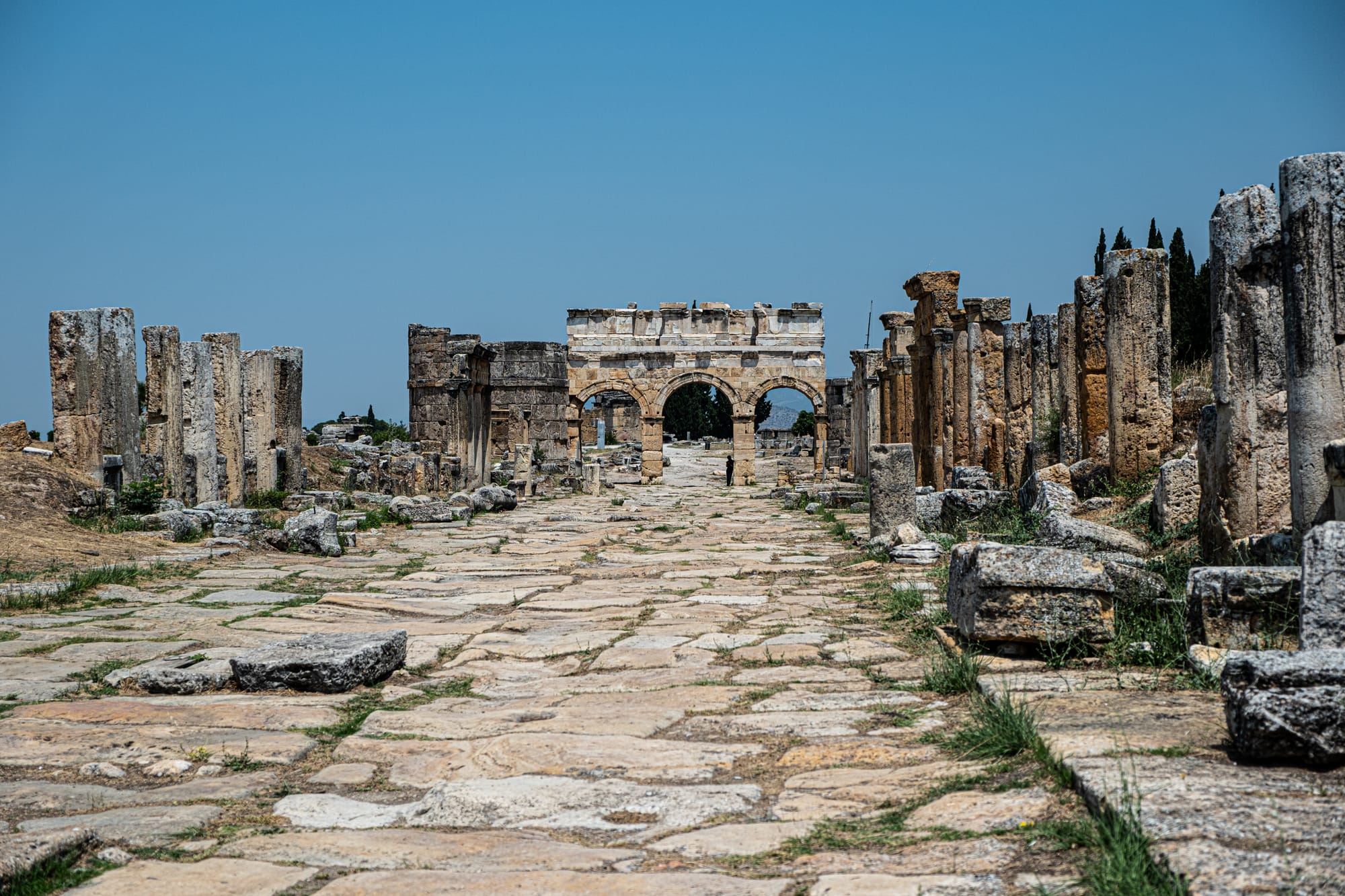
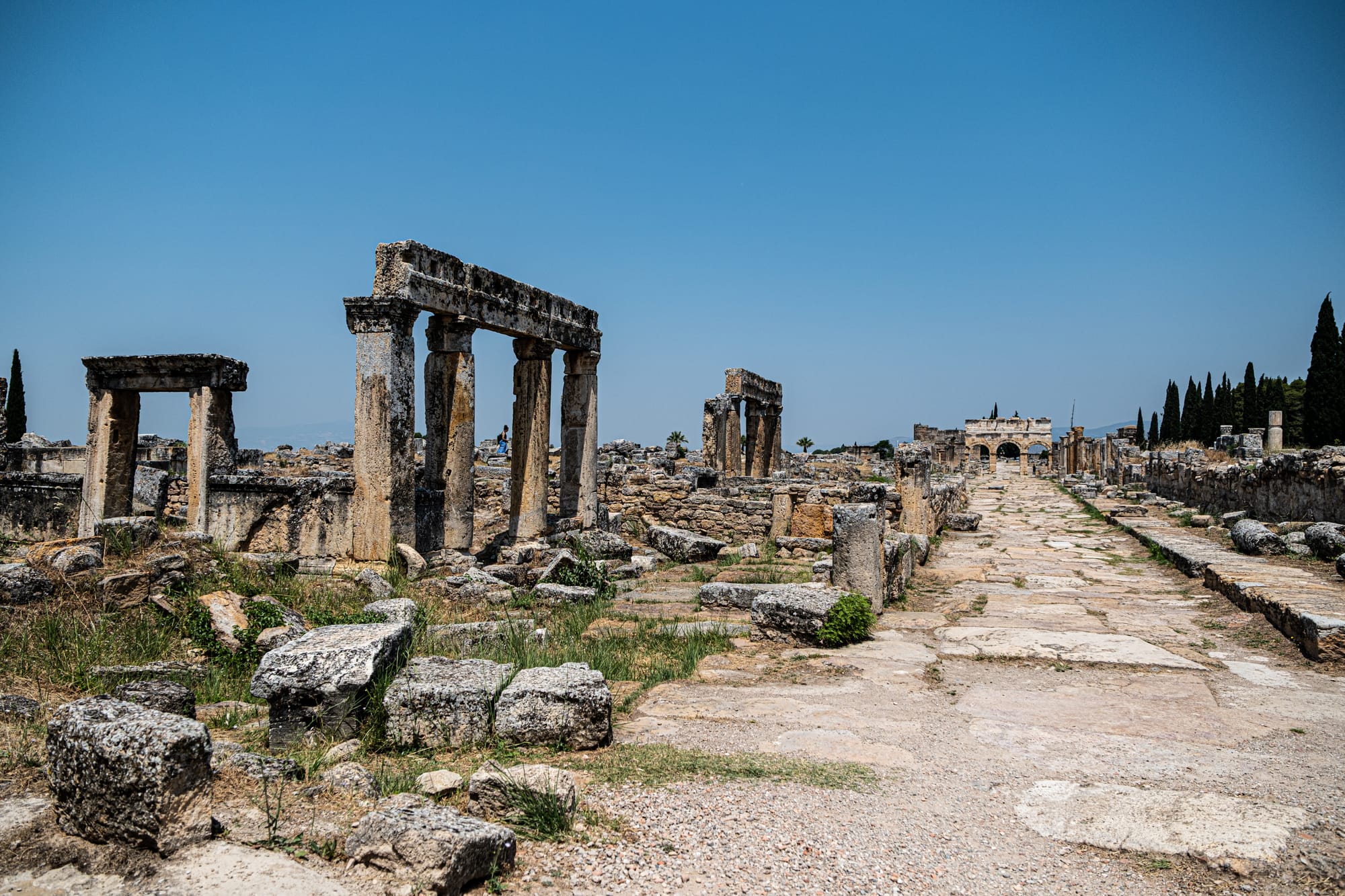
Ancient streets and crumbling columns trace the cityscape of Hierapolis, once a thriving Greco-Roman spa town
Elsewhere, long stone streets stretch underfoot—lined by toppled columns, broken capitals, and low cypress trees. It's easy to walk in silence here, the dry grass brushing your ankles. Occasionally, you’ll spot wildflowers or a poppy growing defiantly between marble cracks.
The necropolis
Hierapolis contains one of the largest necropoleis in Turkey, stretching north of the city for over two kilometers. The sheer number of tombs—sarcophagi, domed graves, and family mausoleums—speaks to how central the idea of death was to this place.
Built for wealthy Romans, Phrygians, and early Christians alike, the tombs offer a mix of architectural styles. You’ll notice lion motifs, inscriptions, and weatherworn reliefs. Despite their number, there’s a quiet dignity here. The light moves slowly. Shadows of cypress trees fall on stone.
Paragliders and the living sky
One of the unexpected joys of visiting Hierapolis is looking up. All through our visit, paragliders floated down from the sky, catching the thermals that rise from Pamukkale. It’s a strange, beautiful contrast—ancient ruins below, futuristic humans suspended in color above.
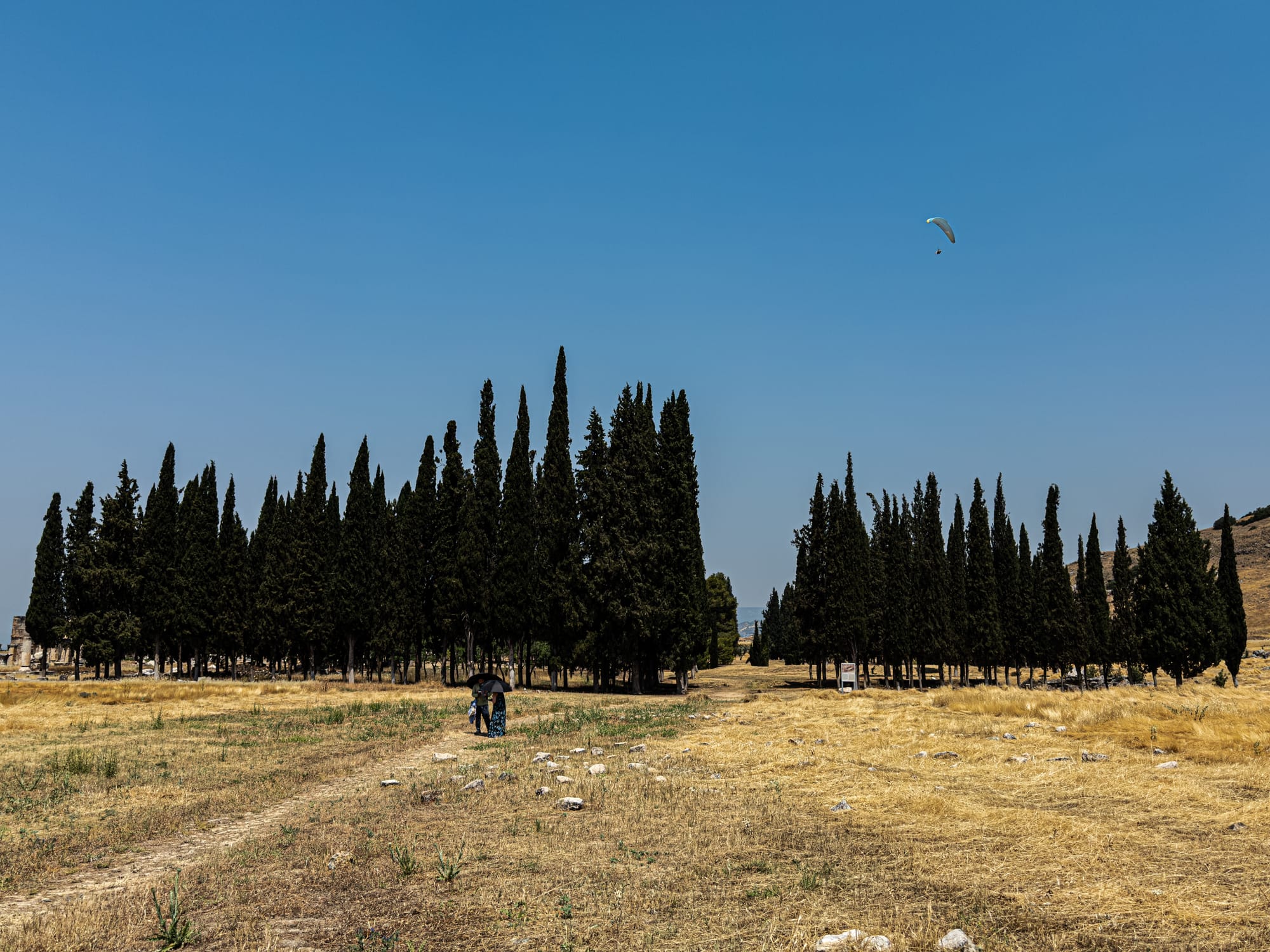
It’s hard not to read it as metaphor: the weight of history, the lightness of now.
Walking the landscape
More than any specific monument, it was the act of walking through Hierapolis that stayed with us. The ochre fields. The wildflowers. The wide, horizontal composition of stone against sky. The textures of age and abandonment.
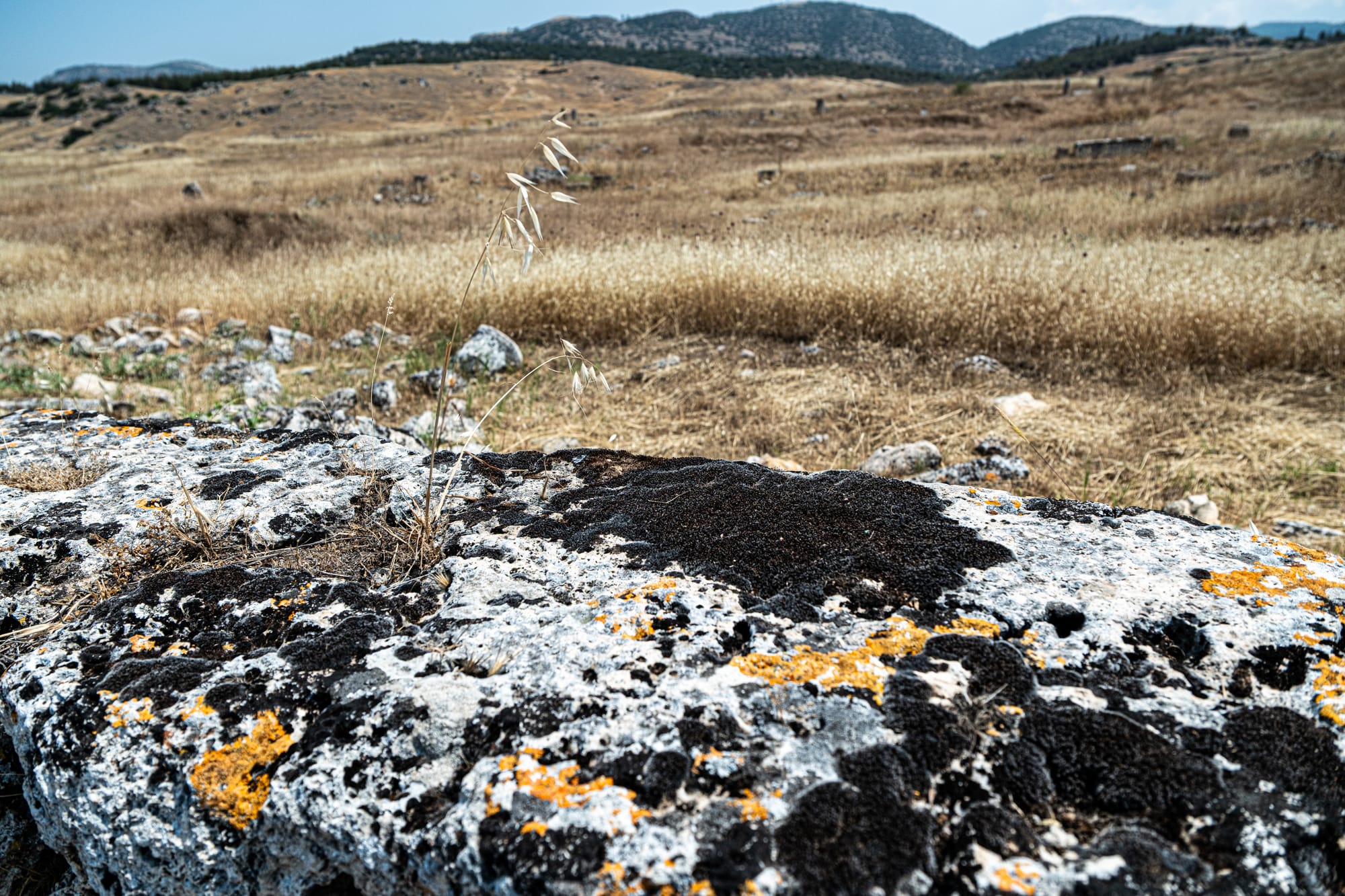
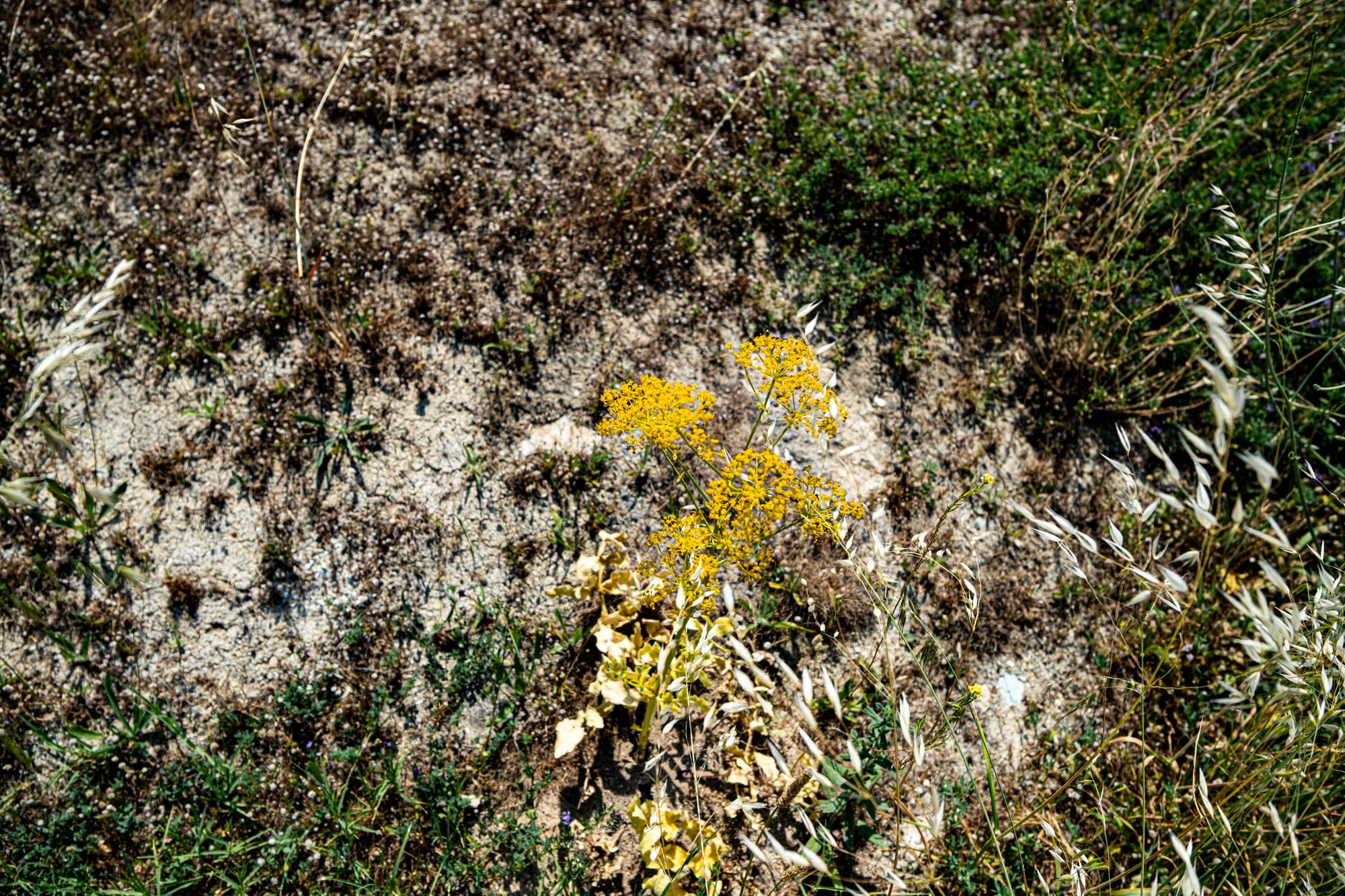
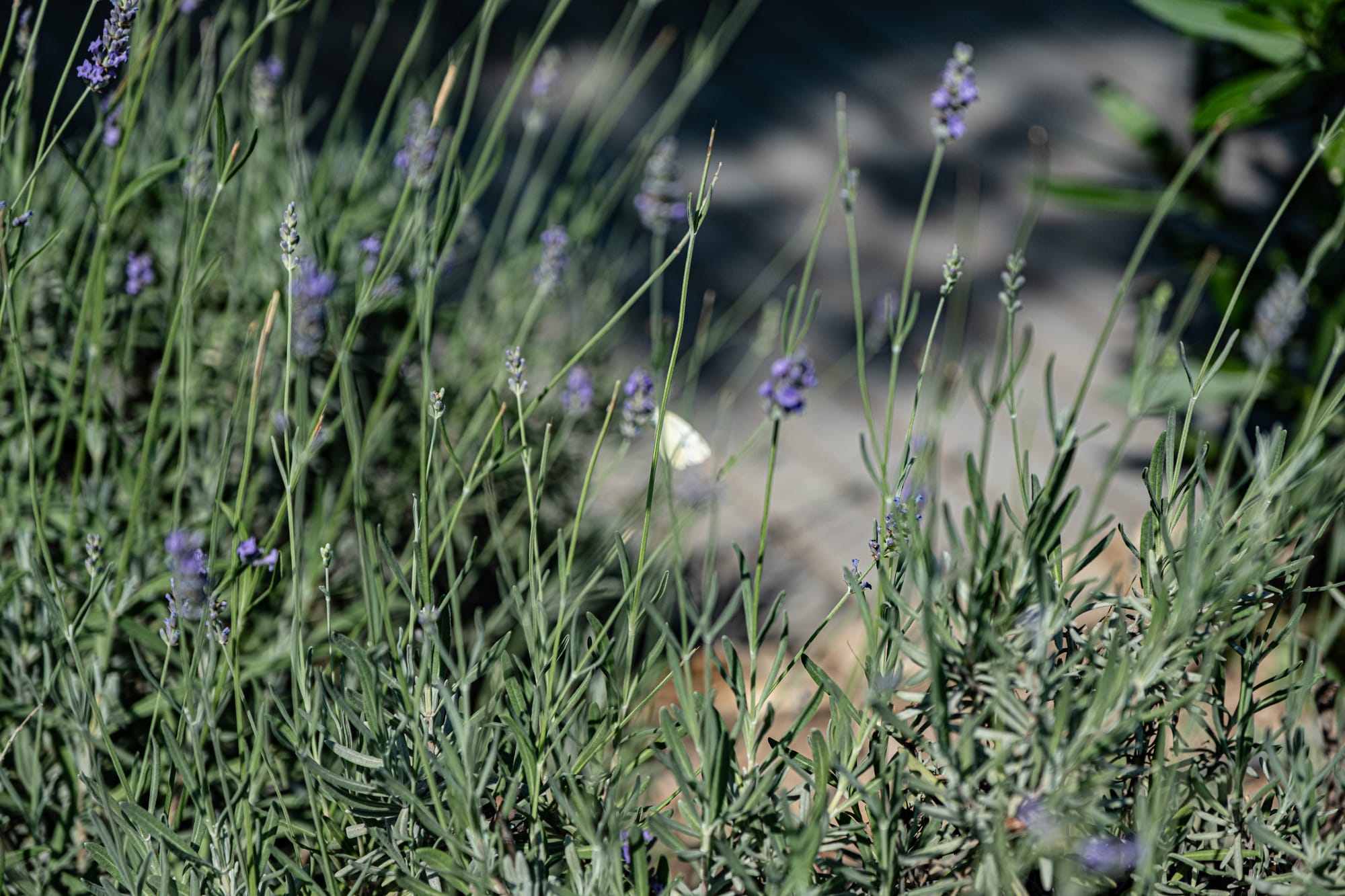
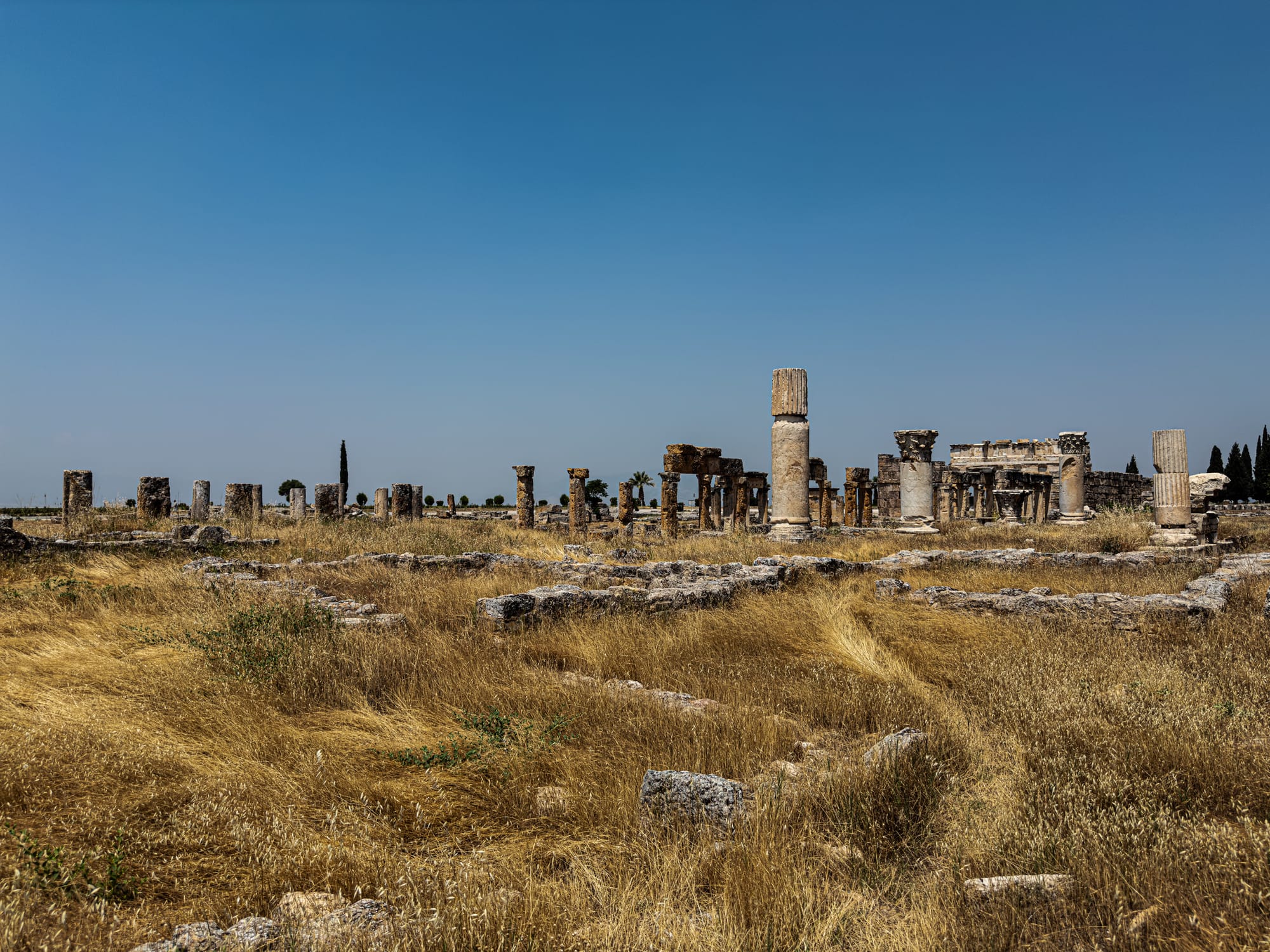
Wildflowers, lichen, and sun-bleached grasses grow freely between the ruins of Hierapolis
Even in the heat, even with limited signage, it’s an intuitive place.
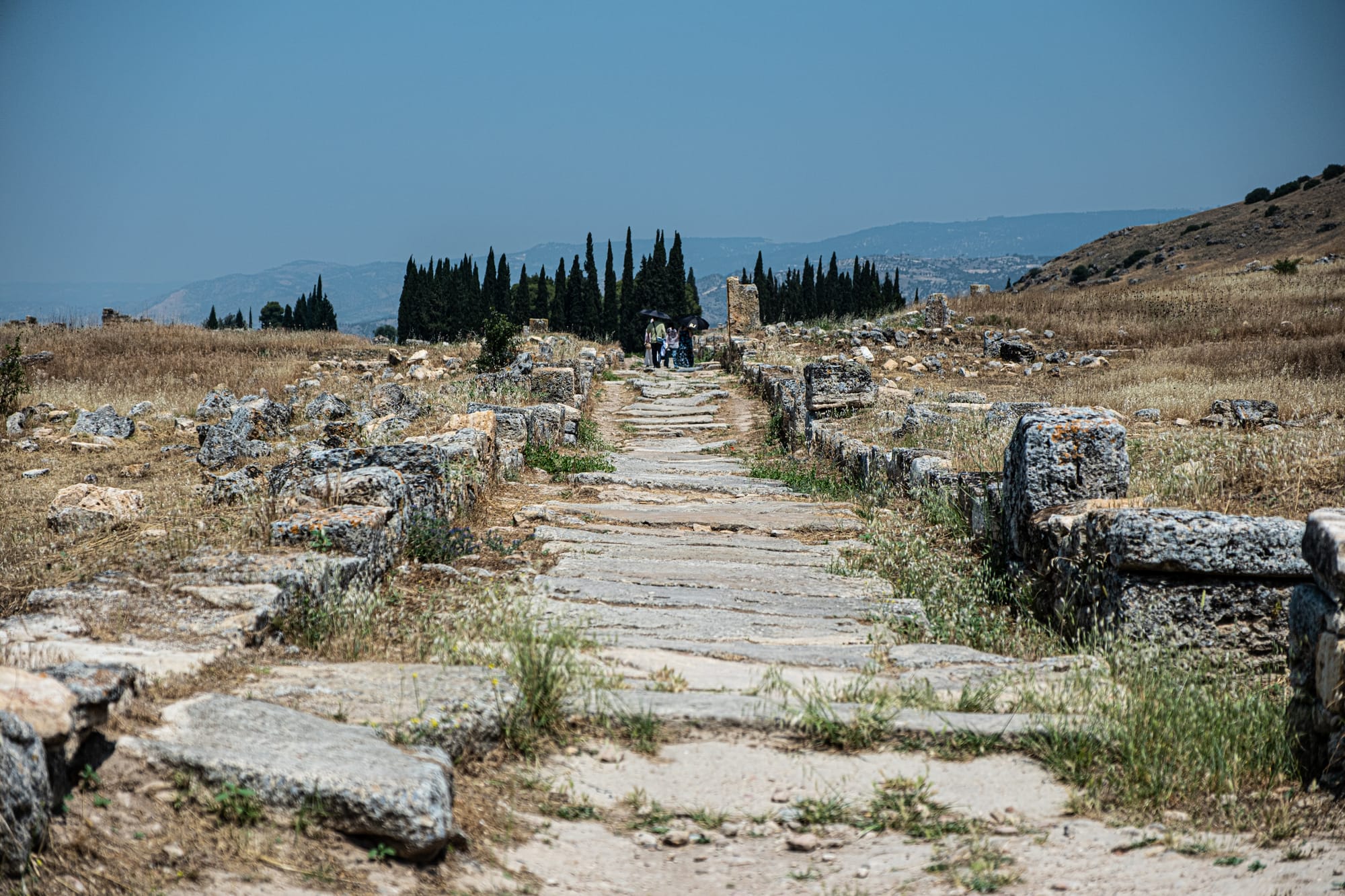
There are moments of quiet awe: sitting on a carved block of marble, watching a crow land on a distant column. Paths that don’t really lead anywhere but feel worth following anyway.
Getting there
The best way to see Hierapolis is by combining it with Pamukkale in a guided day trip from Antalya. You’ll usually have 3–4 hours of free exploration at the site, which is enough for a full circuit of the amphitheater, museum, necropolis, and main colonnades. Wear good shoes, bring water, and prepare to walk in the sun.
We took this tour and genuinely recommend it.
Whether you come for the myths, the stones, or the silence, Hierapolis makes an impression.






